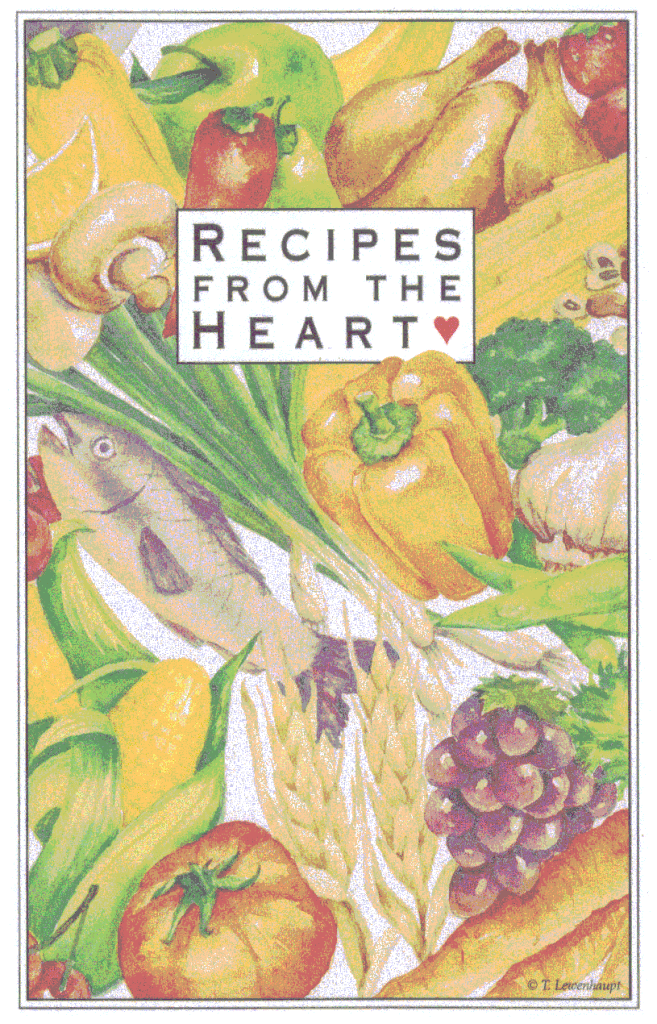by Christine Leishman
I had been working at UCSF Medical Center for more than two years when I was asked to develop a twelve-week menu cycle for patients in a new heart disease reversal program. The guidelines for the diet were simple yet daunting: vegetarian, no added fat, no nuts or seeds, no more than 2 gm of fat per serving with the exception of tofu. I had developed a number of lowfat and fat reduced recipes for the cafeteria and the patient food service but this felt, at first, as if I was being asked to cook with my hands tied behind my back.
I began by looking at the lower fat recipes I had already put in place to see if there was any way to eliminate the fat all together without compromising the dish. Soups were by far the easiest to translate. By eliminating the initial fat used to wilt the vegetables, dry toasting the spices, and using only vegetable stock or water I found all of our vegetable and legume soups were wonderful and in many cases better. I also tried fat-free recipes I came across in books, magazines and “on line” but I found many of the stews to be pretty flavorless, cream-style soups to be thin, and pastries to be dry. I reread Harold McGee’s On Food and Cooking and my old dog-eared copy of Madeleine Kamman’s The Making of A Cook to remind myself of what fat does to food, what qualities I was trying to replace, and how I might accomplish that. I played with the dishes I loved at Greens at Fort Mason that had so much flavor from chilies and spices but used a great deal of olive oil. Once again toasting the spices separately and roasting the onions and garlic before beginning gave the flavor and sweetness of sautéed vegetables without the extra fat. Using nonfat milk, cornstarch, flour, or potatoes to thicken flavorful soups in place of cream was very successful. The desserts and pastries presented more of a challenge and I kept them very simple. This was, after all, supposed to be food that our patients could prepare at home themselves on a regular basis.
As you can see not all of the recipes in this book are fat-free and vegetarian. We wanted to create a cookbook that would include the recipes I had developed for the Heart Disease Reversal Program as well as some of the more popular lowfat recipes from the cafeteria, patient menu and outpatient cooking classes. The most important criterion for the recipes we have included is that they taste wonderful. And they just happen to be lower in fat.
Christine Leishman
Department of Nutrition and Dietetics
UCSF Medical Center
These recipes were created for the Department of Nutrition and Dietetics at the University of California, San Francisco Medical Center by menu and recipe coordinator Christine Leishman, who has extensive experience in some of San Francisco’s finest restaurants. They are for anyone who is serious about cooking and eating delicious and healthful foods.
Nutrition information was provided by Andrea Johnson RD.
Appetizers and Snacks
Desserts
Grains and Pasta
Salads
- Apple Cucumber Salad
- Couscous Salad
- Cucumber Raita
- Ginger Carrot Salad
- Marinated Vegetable Salad
- Melon Salad
- Minted Lentil Salad
- Orange and Jicama Salad on Spinach
- Orzo Salad with Cumin and Corn
- Potato Salad with Indian Yogurt
- Roasted Vegetable Salad
- Sesame Rice Salad with Asparagus
- Spiced Beet Salad
- Spiced Cucumber Wedges
Soups
- Black Bean Soup
- Chicken Stock
- Chicken Tomatillo Soup
- Chilled Minted Pea Soup
- Corn Chowder
- Curried Cream of Red Pepper Soup
- Curried Lentil Soup
- Curried Pumpkin Mushroom Soup
- Fish Fumet
- Ginger Sweet Potato Soup
- Grape Harvester’s Soup
- Indian Spiced Tomato Soup
- Minestrone Soup
- Tofu Miso Soup
- Vegetable Dill Soup
- Vegetable Stock
- Vegetarian 3 Bean Chili
- Vegetarian Borscht
Meats, Poultry, and Seafood
- Asian Chicken Stew
- Beef Enchilada Casserole
- Chicken Fajitas Filling
- Curried Chicken Breasts
- Grilled Pollock with Tomato Vinaigrette
- Grilled Shark Brochettes
- Lemon Tarragon Chicken
- Moffitt Cafe Lasagna
- Orange Glazed Chicken
- Poached Snapper Duglere
- Scallops en Papillotte
- Sesame Chicken with Apricot Orange Glaze
- Sesame Ginger Sea Bass
- Tuna Noodle Casserole
- Turkey Tettrazini
Sauces, Spice Mixtures, Marinades, and Dressings
- Apricot Orange Glaze
- BBQ Sauce
- Chris’ Christmas Vinegar 1996
- Cranberry Chutney
- Curry Spices
- Dill Vinegar
- Fresh Tomato Salsa
- Herb Vinegar
- Honey Mustard
- Italian Vinaigrette
- Lemongrass Vinegar
- Mint Dressing
- Orange Basil Dressing
- Pistou Sauce
- Red Pepper Relish
- Roasted Garlic Paste
- Roasted Onions
- Roasted Red Pepper Sauce
- Sesame Ginger Dressing
- Soy Dipping Sauce
- Tangy Apple Dressing
- Teriyaki Marinade
Vegetables and Legumes
- African Vegetable Stew
- Baked Beans
- Braised Kale
- Braised Kale with Red Pepper and Garlic
- Eggplant Sandwiches
- Ginger Bok Choy
- Grilled Tofu Sandwich
- Marinated Baked Tofu
- Masur Dal
- Mediterranean Frittata
- Mushroom Ragout
- Roasted Red Potatoes with Garlic and Rosemary
- Roasted Sweet Potato Puree
- Spiced Garbanzo Beans
- Squash and Lentil Stew with Apricots
- Tofu Brochettes
- Zuni Stew

